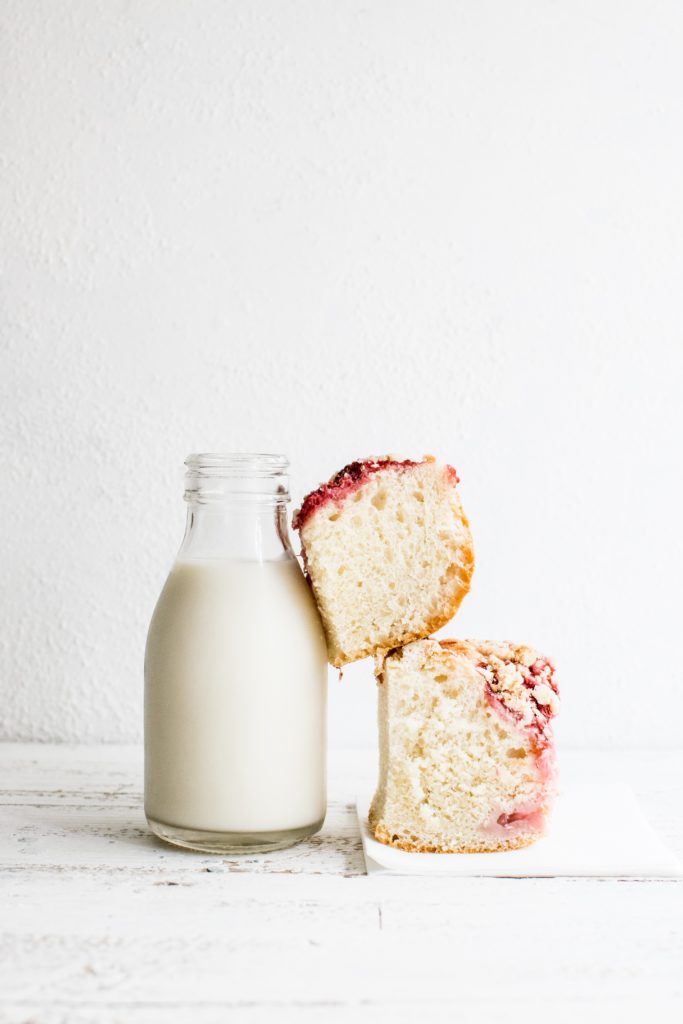
Did you remember your first cup of coffee? Was it an espresso or a cappuccino? Some people start their coffee journey and interests from that exquisite latte art pattern on a cup of cafe latte. The pale liquid produced from a cow or what we called ‘milk’, has always been a staple food and even more with coffee drinks that could change some people lives. There are many researches on coffee and extractions but another important aspect in the coffee industry is also to understand how milk works with coffee to create that delicious cup that draws you to reading this article.
Nutritional composition
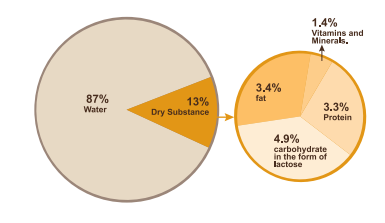
Quantities of the main constituents of raw milk from cows vary considerably; between cows of different breeds and between individual cows of the same breed. Cow’s milk consists of about 87% water and 13% dry substance. The dry substance consists of approximately 4.9% carbohydrate in the form of lac?tose, 3.4% fat, 3.3% protein, and vitamins and minerals.
Carbohydrates
Carbohydrates in milk are in the form of simple sugar called lactose. Lactose is a disaccharide (two sugars) made up of galactose and glucose bonded together. While lactose is classified as a sugar, it is only 16/100 as sweet as regular sugar (sucrose).
Proteins
Milk is a rich source of protein; it has around 1 gram of protein in each fluid ounce. Proteins in milk can be divided into two groups based on their solubility in water. Insoluble milk proteins are called ‘casein’ which forms the majority (80%) of proteins in milk, whereas soluble proteins are known as ‘whey proteins’.
Fat
Milk fat is one of the most complex of all natural fats, containing about 400 different types of fatty acids. These fatty acids in milk fat are 65% saturated, 29% monounsaturated, and 6% polyunsaturated. The polyunsaturated fatty acids in milk fat include small amounts of the essential fatty acids that cannot be made by the body and must come from diet, and these are linoleic and linolenic, and approximately 5% trans fatty acids.
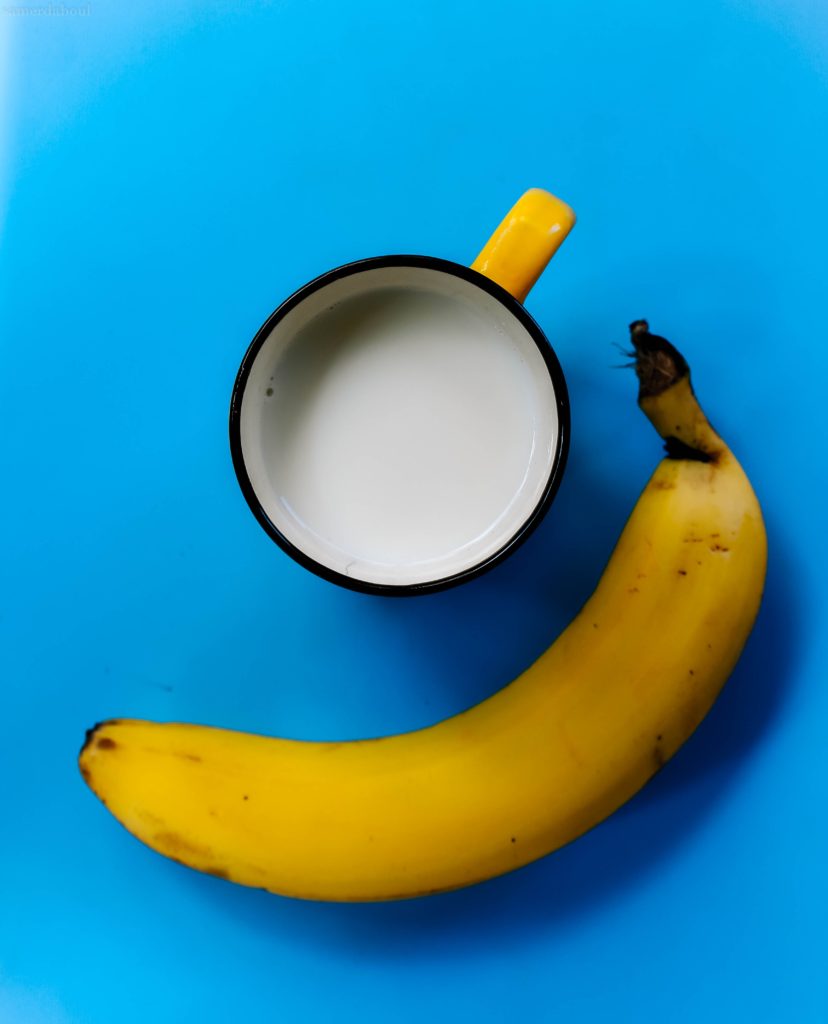
Vitamins and Minerals
The following vitamins and minerals are found in par?ticularly large amounts in milk:
Vitamin B12: This essential vitamin is only found in foods of animal origin, and milk is very high in B12.
Calcium: Milk is not only one of the best dietary sources of calcium, but the calcium found in milk is also easily absorbed.
Riboflavin: One of the B-vitamins, also called vitamin B2. Dairy products are the biggest source of riboflavin in the Western diet.
Phosphorus: Dairy products are a good source of phos?phorus, a mineral that plays an essential role in many biological processes.
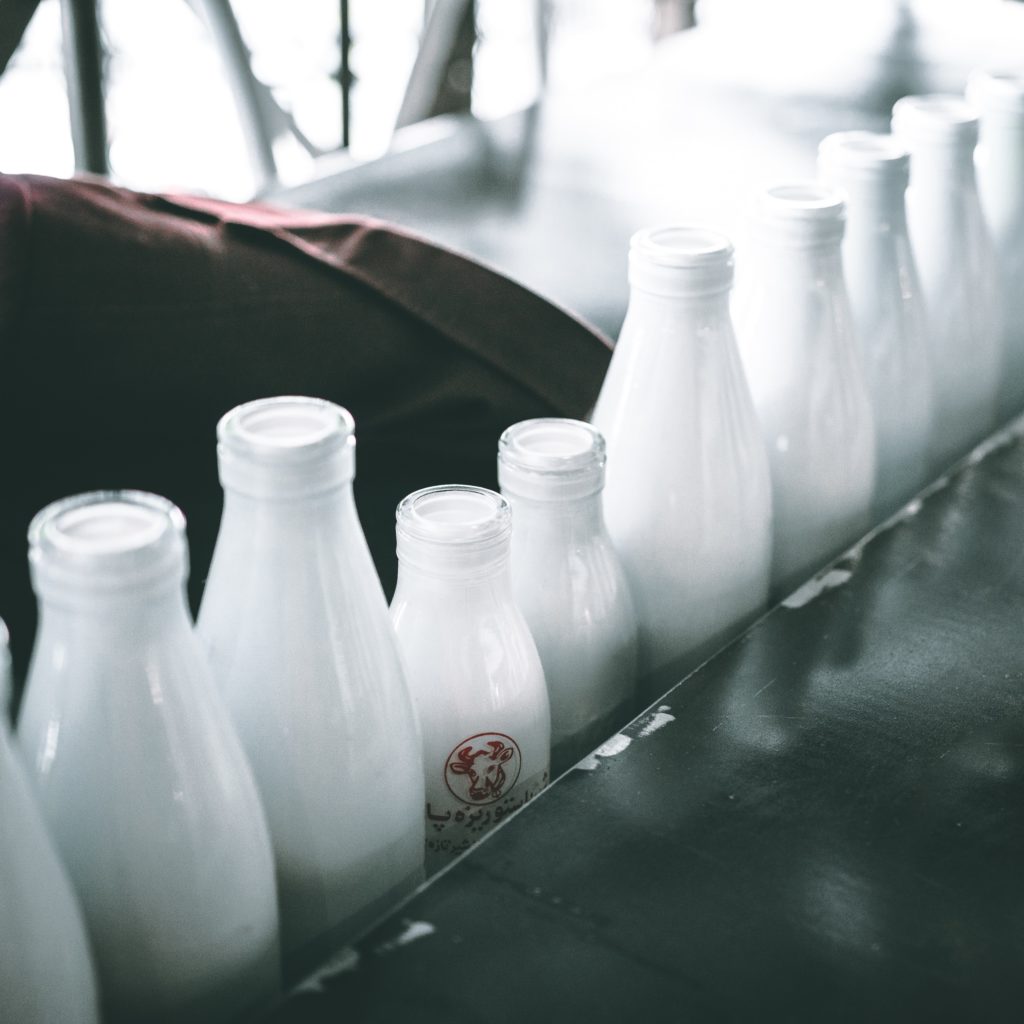
Varieties of cow’s milk
Whole milk is 3.5% milk fat and is the closest to the way it comes from the cow before processing with nothing added or removed. Most coffee shops uses this type of milk to create the
creamy texture you get in your favorite milk beverage. Reduced?fat milk contains 2% milk fat and low-fat milk contains 1% milk fat. Fat-free milk, also called nonfat or skim, has nearly all the fat removed and contains no more than 0.2% milk fat.
Lactose-free milk is regular milk but with sugar lactase, an enzyme produced by the stomach, added to break down the sugar galactose. People who have gastrointestinal symptoms when they consume dairy products containing lactose, is lactose intolerance or in other word, lactase deficiency. Lactose-free milk will also taste sweeter because the milk sugar lactase is broken down into two simple sugars, galactose and glucose. Milk com?pany added lactase to lactose-free milk so that those with gastro?intestinal symptoms can drink the milk without any discomfort.

Milk Processings
There are several types of milk processings but the most relevant process in association to coffee making are pasteurization. The basic process for pasteurization involves heating the milk to a temperature of no less than 71.7 degrees Celsius for a minimum of 15 seconds and a maximum of 25 seconds. This process is known as High Temperature Short Time (HTST). Along with correct cooling and chilled distribution, pasteurized milk has a shelf life of five to 15 days. It is a relatively mild form of treatment which kills harmful bacteria without significantly affecting the nutritional value or taste of the milk.
In UHT or Ultra High Temperature treatment, milk is exposed to brief, intense heating to temperatures in the range of 135-140 degrees Celsius for three seconds. Most importantly, UHT treatment is a continuous process which takes place in a closed system that prevents the product from being con?taminated by airborne micro-organisms. The UHT milk passes through heating and cooling stages in quick succession, then is immediately put into a sterile Tetra Pak shelf safe carton. This process avoids any re-infection and the end result is a product that lasts up to six months without refrigeration or preservatives.
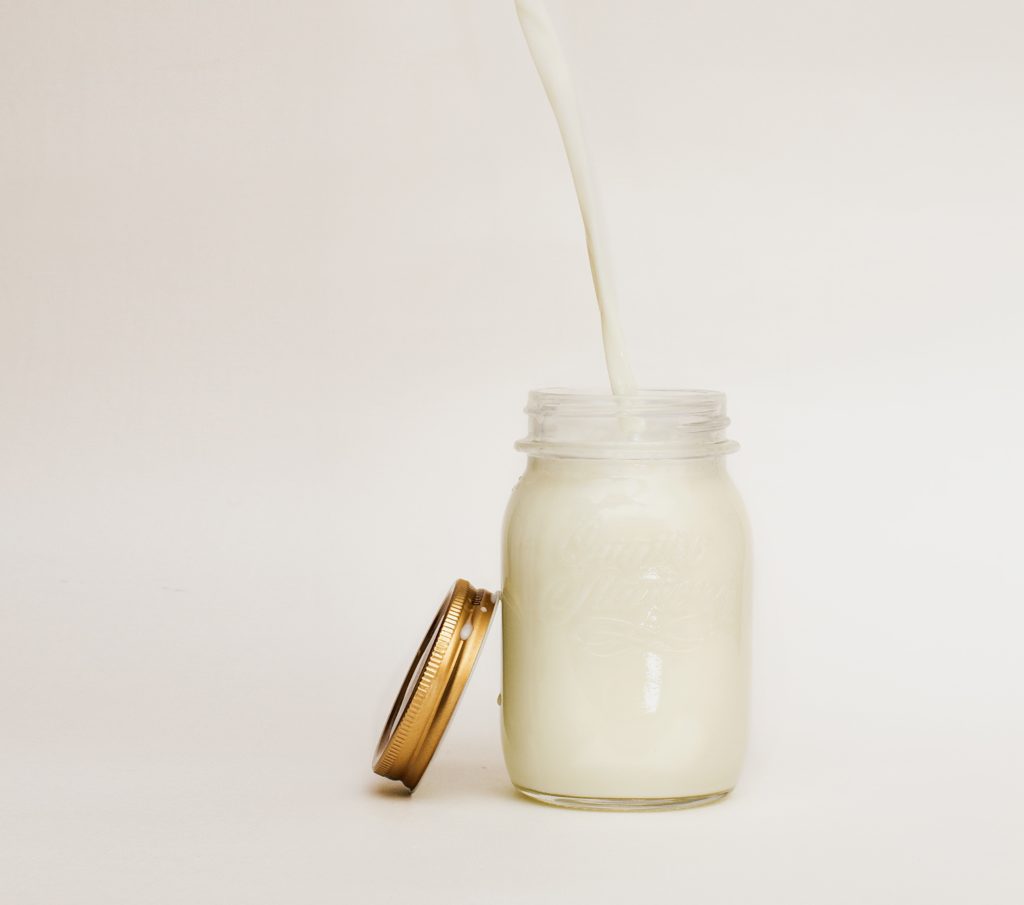
Sterilized milk goes through a more severe form of heat treatment, which destroys nearly all the bacteria in it. First, the milk is pre-heated to around 50 degrees Celsius, then homogenized, after which it is poured into glass bottles or can which are closed with an airtight seal. There is no legally defined process for sterilizing milk but, commonly, filled bottles are carried on a conveyor belt through a steam chamber where they are heated to a temperature of between 110-130oC for approximately 10-30 minutes. Then they are cooled using a cold water tank, sprays or, in some cases, atmospheric air and then crated. The sterilization process results in a change of taste and color and also slightly reduces the nutritional value of the milk, particularly the B group vitamins and vitamin C.
Evaporated milk processing is made by heating milk until about 60 percent of its water content has evaporated. It is then homogenized, packaged, and sterilized. The result is a dense, creamy, ultra-concentrated milk that can be canned and stored for several months. The high heat used in processing also adds a slightly caramelized flavor and darker color than regular milk.
Condensed milk is sometimes used in many Asian coffee shops with menus like Kopi or Thai-style iced coffee. It is made by condensing milk to one-third of its original volume and add in sugar. It is very thick and sweet and is available in cans.
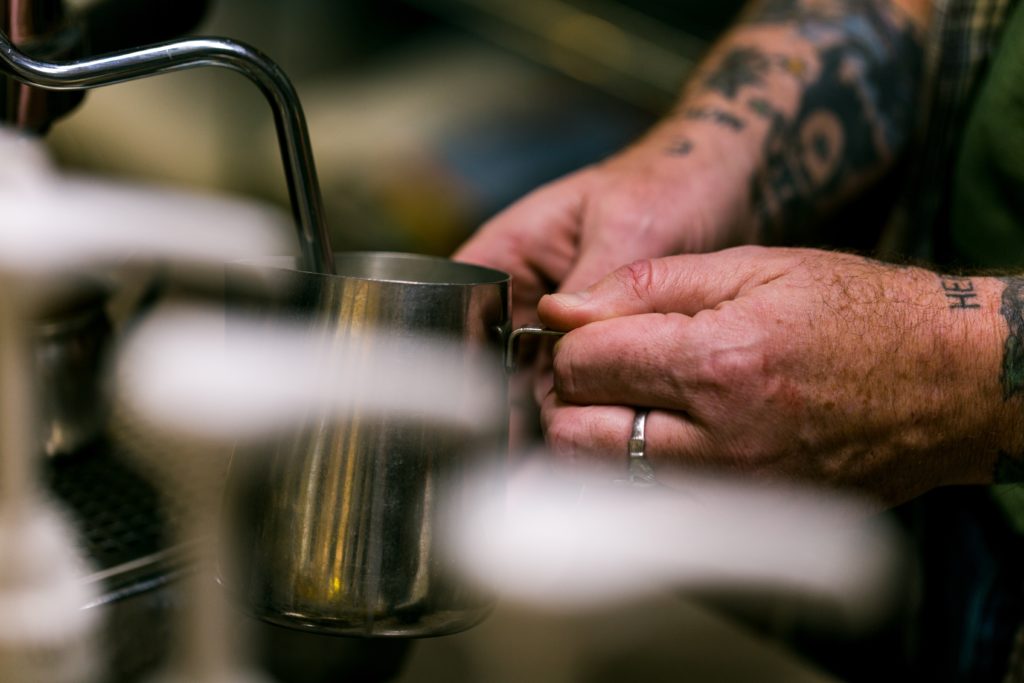
Steaming Milk
Well-steamed milk combined with great-brewed espresso is a wonderful sensory experience. Great milk foam is like liquid marshmallow: soft, mouse-like and enjoyable to drink. Have you ever wonder how does milk froth work? And how it form that stable silky texture? Let’s explore a bit deeper.
Steaming milk is the process of injecting hot water vapor into cold milk until it reaches the ideal temperature and amount of froth for your perfect coffee beverage. When you use your steam wand to froth the milk, millions of tiny air bubbles are injected into the milk. Milk proteins are destabilized by the heat (their structure, which resembles a ball of wool, begins to unravel) and the protein molecules start to wrap around the air bubbles. This creates a protective coating that keeps the bubbles from bursting. However, different kind of milk require different amounts of steaming time since each type of milk have different molecular compositions. Several components of milk play an important role in creating stable foams and delicious tasting drinks, and that is proteins, carbohydrates, and fat. For creating stable milk foams of desirable texture and stability, milk fat and milk proteins are of crucial importance. Milk proteins stabilize the air bubbles in milk foams. Milk fat destabilizes foams, but is desired for flavor. Heating up these fat molecules not only affects foam texture; when heated or steamed, the fatty acids also participate in chemical reactions, such as oxidation reac?tions, that can give rise to an undesirable flavor. The steaming temperatures for each type of milk are thus differed due to their distinct properties.
![]()
Choosing the Right Milk
Whole milk produces in a soft and creamier foam that flows easily on the surface of your coffee. While skim milk re?sults in more foam, larger air bubbles, and the consistency is less supple because of its higher protein content than whole milk. The real difference between the two foams was their smoothness and taste. The fat content adds a wonderful texture to the drink and also changes the way flavour is released. Coffee made with skimmed milk has an immediate and intense flavor that does not linger while coffee made with whole milk, the flavors will be less intense but will last longer. This sums up that all forms of milk can produce foam regardless of their fat content, but what really whip them up is the protein. The different protein content of dif?ferent milk consequently affects each milk’s ability to maintain that frothy foam. Protein content can vary slightly depending on the time of year and how the milk is processed. Creating stable milk foams is an intricate interplay between balancing the desir?able foaming properties of milk proteins with the destabilizing milk fat.
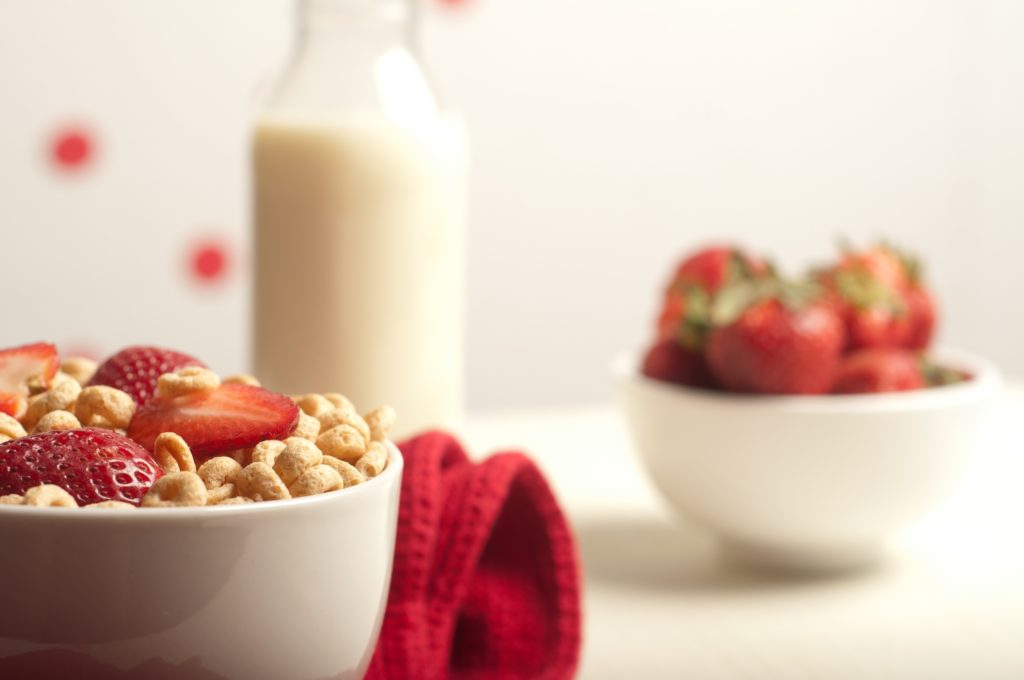
Milk Alternatives
Soy milk is made from soaking dried soybeans and grinding them in water. Soy is naturally high in essential fatty acids, proteins, fiber, vitamins, and minerals. This is one of the best alternatives for those who are lactose intolerant and allergic to nuts. However, it might taste a bit unusual when mixed with coffee but the milk is steamed well and produces a thick and firm layer of foam that didn’t dissipate.
Almond milk is made by grinding almonds in a blender with water and then strain out the almond grounds. It has thinner texture compared to soy milk but the taste is superior. This is one of the most popular alternatives as it tastes much better with coffee and is naturally lactose-free. The almond milk steamed much closer to skim milk.
Another alternative is rice milk which is made from milled rice and water. It is the least allergenic of all of the dairy products but it is very high in carbohydrate and low in protein which means it might not be the best option for athletes or those with diabetes. These milk alternatives are becoming more popu?lar and people may interchange dairy products to theses option once in a while.

Adding Milk Into Your Coffee?
Adding milk to your coffee, not only it can change the color of the coffee and enhancing your taste experience, but there are other impacts of adding dairy into your daily cuppa. Coffee is
one of the best sources of antioxidants, especially polyphenols, and it is important in keeping your body healthy. A study by Nestle researchers showed that by adding milk into your coffee does not affect the amount of polyphenol being delivered to your bloodstream. Consuming the right amount of coffee and dairy does not harm your body but there might be a few reasons to consider:
– If you want to loose weight, don’t add milk. Enjoying black coffee without sugar will only add 5 calories per cup to your daily calorie intake. By adding milk, the calories will rise significantly to about 56 calories.
– If you suffer from acidity, adding milk to your coffee will neu?tralize the pH level since black coffee has an extreme acid level which will increase acid concentration in your urine.
Milk Storage
– Milk is best stored in the refrigerator at the temperature be?tween 0 – 4 degrees Celsius.
– Once opened, milk is safe to consume for up to three days.
– Keep milk containers sealed and away from strong-smelling food items in the fridge
– —the milk can pick up these odors.
– To avoid spoilage, do not return unused milk from serving pitchers to the original container.
– UHT and canned milk found in the non-refrigerated aisle are perishable once opened. Opened UHT and canned milk must therefore be refrigerated. After opening canned milk, immediately transfer any unused portions to a clean, opaque and airtight container. These milk products should be used within 3 days of opening.









NO COMMENT